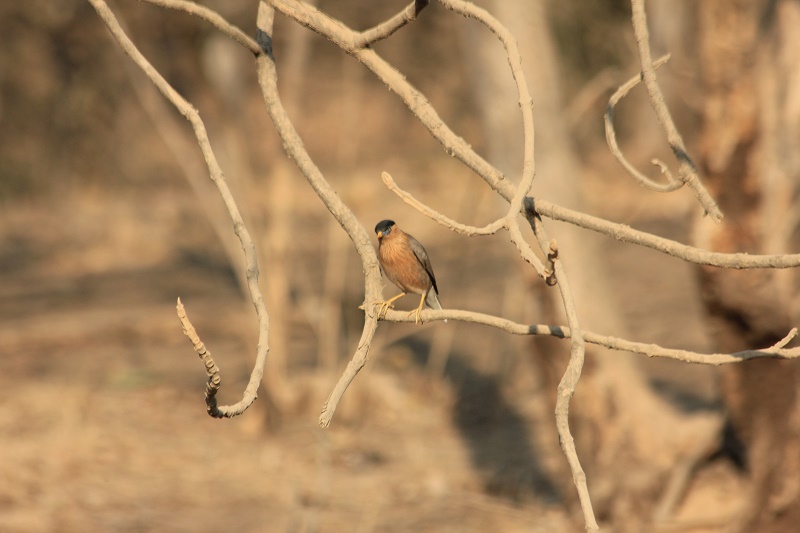 Indian Adventure 2
Indian Adventure 2
Throughout the summer, WILDFOOT’s Simon enjoyed an Indian adventure and kept a diary of his travels for you to read. Today, Simon continues his trip to the Sasan Gir Forest National Park.
Part 2
After enjoying our morning safari, our guide takes us for a stroll outside Lion Safari Camp by the river. Amid overbearing midday heat, we enjoy a huge list of water birds and other species, spotting green bee-eater, pied kingfisher, black winged stilt and red wattled lapwing.
The afternoon could not be a better follow on from this morning’s wild fest, as we observe white spotted fantail, Indian nightjar (the same one as this morning), Tickell’s flycatcher, blossom-headed parakeet, crested serpent eagle, cattle egret and another 20 or so other species.
There are seven routes in the Sasan Gir Forest National Park, all of which are very different. The 30 or so jeeps that leave every safari are split into differing routes to keep congestion to a minimum. What we endeavour to do here at WILDFOOT is keep to the back of the group of jeeps, so that those travelling with us can enjoy the peace and tranquillity of not having other vehicles behind, which also allows for improved observations of the surrounding wildlife.
As the sun lowers, we are treated to the best sighting yet of a mother Lioness and two eight-month-old juveniles at one of the many manmade watering holes in the park. After a short wet, they settle down in the last of the warm lingering sunshine while we take all of the snaps we need. This light seems to be ideal for the purpose and lends a certain character that you just don’t find at any other time.
The Asiatic lion used to exist in south-west and north Asia, Eastern Europe and the Middle East. By the 19th century, it had been eradicated from Turkey and even up to 1944, the last corpse of a lion was found on the bank of the River Karun in Iran.
In 1963, the last Persian pride were ruthlessly hunted and killed in Iran. At the time, the local press praised this event as a success, which seems absolutely shocking today knowing that the Asiatic lion is now endangered and survives in Sasan Gir Forest National Park.
You will be pleased to know that these remarkable creatures are now flourishing quite nicely along with the Indian leopard, due to the major understanding of the government with influences from a handful of conservationists who have fought exceptionally hard for this day, even with their near loss of life in some cases.
We leave this park and region with a huge respect for the hard working guides and rangers of the region. We have got to know the very experienced guides in the first couple of days of our Indian wildlife holiday, and their sincere love of the region and its wildlife, not to mention birding, is very evident.
Next time, Simon will travel to Bera village in south-west Rajasthan in search of Indian leopards. If you are interested in discovering more about the Indian experience offered by WILDFOOT, get in touch with the wildlife travel experts today.








